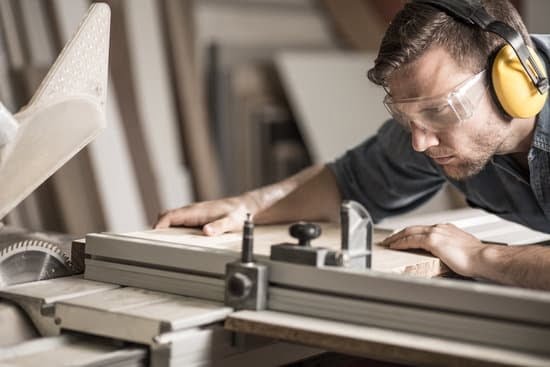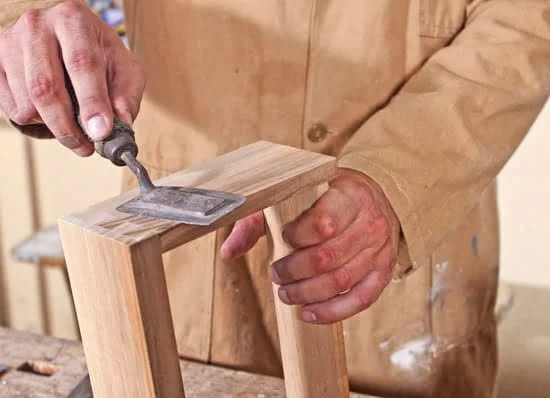Introduction
Woodworking is a type of craft involving the carpentry, construction, and shaping of objects from raw materials or components such as wood. It can include things like cabinetmaking, furniture making and other antique reproductions. Clamps are used to hold large pieces of wood together while they are being worked on. They provide an even pressure so that edges line up correctly when joints are cut or glued in place. Clamps come in many different styles and sizes, each suited for a certain purpose. Depending on the size of the piece you are working with and what type of joints you are creating, there’s usually at least one clamp you’ll need to ensure a secure result. As a general rule, it helps to have multiple clamps available so that you can use the correct clamp for each joint in your project.
Types of Materials Used with Woodworking Clamps
The number of clamps needed for woodworking depends on the types of joints and pieces being connected. For example, when making a mortise-and-tenon joint, many professionals suggest using one large clamp across the entire joint length to securely hold the pieces together while the glue dries. For more intricate projects, such as box assembly, several smaller clamps may be necessary in order to keep each component secure.
The most common type of material used for woodworking clamps is metal such as steel or aluminum. Metal clamps are strong and provide good grip for securing woods like hardwood or softwood together during any carpentry project. Additionally, many wooden clamps are available that can be used for both woodworking and larger home repairs. Wooden clamps come in various shapes including ones with an adjustable thumbscrew to allow slight adjustments while clamping. Plastic and rubber band clamps can also be suitable alternatives depending on the specific project needs.
Different Types of Clamps Used in Woodworking
The number of clamps needed for woodworking will depend on the project at hand. Generally, it is recommended to get at least four clamps of various sizes to accommodate different types of woodworking projects. Additional clamps may be necessary to secure larger or heavier pieces of wood together.
When it comes to the type of clamp used in woodworking, there are three main varieties: bar clamps, pipe clamps and corner clamps. Bar clamps are commonly used for assembly jobs, attaching two pieces of wooden material together for a strong bond. Pipe clamps are useful when securing individual pieces within an assembly; typically used with blocks or guides to ensure equal pressure is applied to each item being joined together. Corner clamps are best used for fastening twelve-inch boards or panels with right angle corners to make sure straight lines remain uniform when joining components together.
How to Determine the Best Size and Quantity of Clamps for a Project
When it comes to woodworking projects, the right clamps can make a world of difference. But what size and number of clamps is best for the job? It depends on the project, as some will require longer reach or stronger hold than others. When determining what size and number of clamps you need for an upcoming project, there are few key factors to consider:
1. Project Size: The first factor to consider is how big or small your project is. If you’re working with small pieces or tight joints, you may want to opt for smaller clamp sizes such as hand screws or bar clamps. For larger projects, C-clamps and other long-reach options may be more suitable.
2. Joint Strength: How well do you need a joint to stay together? If it needs a really secure bond for stability, then using multiple clamps might work best. The joints should also be dry-fit first so that the holes line up before clamping together.
3. Working Space: It’s important to take accurate measurements of your workspace before buying c lams ” not just in terms of length but also height and depth. This will ensure that your chosen clamp size will fit into any required space without issue.
4. Budgetary Constraints: Depending on the type and size of the project, costs can quickly rack up when buying clamps ” having a budget set can help you decide how many you can afford while getting maximum efficiency from them at the same time!
Essential Woodworking Clamps Every Woodworker Should Have
When it comes to woodworking, having the right clamps is essential. Clamps allow you to securely hold pieces of wood together while your glue dries, enabling you to ensure that your workpiece holds together for years. The ideal number of woodworking clamps will vary depending on the size and scope of your project, so it is important to do a bit of research beforehand.
Some basic clamps every woodworker should have in their toolkit include bar clamps, parallel jaw clamps, c-clamps (also known as G-clamps), spring clamps and corner clamps. Bar clamps are best suited for larger projects involving long boards, while parallel jaw and spring clamps typically come in smaller sizes which are suitable for pressing thin pieces of material together. C-clamps are very versatile as they can be used for both large and small objects, but due to their bulkier design carry less pressure than other types of clamp. A corner clamp is useful when joining two pieces at 90 degree angles; these take the guesswork out of attaching two angular surfaces together with precision accuracy.
Most professional woodworkers aim to have at least 12-20 quality bar or parallel jaw clamps in different sizes ranging from 6” – 24” or more depending on the type of work being completed. Similarly, a selection of 4-6 c-clamp should be adequate for most types of projects along with approximately 12 small spring clamp sizes varying between 1” – 3”. Lastly, 2-4 corner clamps in various shapes will also help ensure a secure fit when constructing intricate joints such as dovetails or miters.
Benefits of Having Multiple Clamps
When it comes to woodworking projects, having multiple clamps can be incredibly helpful. For example, with seemingly minor projects such as gluing two pieces of wood together, having at least three or four clamps can ensure that the bond is strong and secure when bonding the pieces. Additionally, larger projects such as cabinets, tables and other furniture will require several clamps around the piece so that it is properly secured while the glue sets and cures.
Having multiple clamps also allows for greater flexibility when working on a project. Depending on the layout of the piece being worked on, some clamps may need to be positioned low down and others higher up; having extra clamps in various sizes will allow for greater maneuverability and make the job easier. Moreover, different clamp types can become useful depending on whether you are securing extra-large pieces or creating intricate joinery. Furthermore, having a variety of styles”such as handscrews or bar clamps”allows for increased versatility during a project.
All in all, owning multiple clamps provides many benefits when woodworking. It increases security of parts being glued together by providing extra support to joints; offers more flexibility during setup; and it allows for an assortment of styles when tackling difficult projects.
Different Ways to Set up and Secure Clamping
Woodworking often requires clamping two pieces of material together in order to keep them secure and in place while you join them. Depending on the project, there are numerous ways to set up and secure clamps for woodworking. Here are a few of the more popular methods:
1. C-clamps: These are quick-release metal clamps which consist of parallel plates with an attached screw thread that when tightened holds the pieces together tightly. They come in various sizes ranging from small to large, so they can be used on most any size of material or stock.
2. Bar Clamps: Commonly referred to as bar clamps, these have moveable heads with a sliding bar and locking mechanism that allow you to apply large amounts of pressure across long distances with relative ease. They range in size depending on how much force can be applied and what kind of stock needs securing.
3. Panel Clamps: Different from other woodworking clamps, panel clamps use multiple bars placed perpendicular to each other with springs between then tighteners at each end. When tightened, these spread apart evenly which helps draw and flatten large panels of wood together without putting extra strain onto either side’s edges.
4. Hand Screw Clamps: Similar to c-clamps, hand screw clamps have jaw plates with turning screws at one end enabling adjustable pressure at any points along their length regardless if you’re joining long or short piece of material perpendicularly or at an angle
Troubleshooting Common Woodworking Clamping Problems
When it comes to woodworking, one of the most important tools you can have is a good selection of clamps. Clamps provide the necessary pressure to keep pieces together while they are being worked on. Without them, many projects would not be possible. But some clamping problems can arise, so it’s important to know how many clamps you should have and how to identify common problems.
Having enough clamps is essential for any woodworking project, as too few will make your job very difficult. When determining how many clamps you need for a project, consider the complexity of your project and its dimensions: wider boards will require more clamps than narrower ones; if using multiple pieces across an area then you may want additional clamps (spreading out your pressure) or longer ones that cover greater distances; similarly, if making a large structure like a box with plenty of joints, then extra sets may need to be invested in. This is especially true for delicate or sensitive projects where extreme accuracy is crucial – such as furniture repairs or intricate joinery. It’s also worth remembering that narrow stock can often fit into smaller-sized clamp jaws which might save money when working with smaller pieces of wood.
Once you’ve got enough clamps on hand, troubleshooting becomes important. A key issue involves an uneven glue application which can cause warping when cured ” this occurs when boards end up unevenly spaced due to pressure placed on opposite sides by the clamping jaws. To avoid warping make sure all the faces stay flush by distributing some small wedges between boards before tightening a clamp – this helps distribute more even pressure simultaneously across both faces at once and prevents unequal drying forces from pulling the edges inward when cured. Additionally, always inspect your glue spread before applying pinched clamps – sometimes small amounts of glue migrate towards higher points in the joint which could store tension and cause unpleasant surprises down the road!
Tips for Clamping Woodworking Projects Successfully
When it comes to woodworking projects, having the right clamps can make a huge difference in the quality of your work. It’s important to use clamps that are appropriate for the job, as using too many or too few could lead to an unprofessional finish. Generally speaking, most woodworking projects require between 3 and 12 clamps, depending on the size of the project.
For smaller projects such as picture frames or repair jobs that require only light clamping pressure, a few 2” spring clamps should suffice. When clamping larger home improvement projects such as shelves, cabinets or furniture legs and joints, ratchet or parallel-jaw bar clamps often come in handy. Clamping long boards together is also best done with two handscrew or parallel-jawbar clamps arranged crosswise so they apply pressure evenly. For glue-ups such as tabletops and shelves, be sure to use 6″12 bar or pipe clamps for adequate hold. Pipe clamps are especially useful for thin material, applying even pressure without marring its delicate surface. Lastly, always check your joints after gluing up a project with a good pair of needle-nose pliers; if there’s any slack in the assembly you may need to tighten your clamps one last time for maximum strength! With these tips in mind, you can make sure you have the right amount of clamps for each woodworking task ” making every project successful and professional looking
Conclusion
Having the right number of clamps for woodworking projects is essential to achieve accurate and professional results. Clamps are used to hold pieces of wood together during assembly, glue-ups, and machining operations. The number of clamps required depends on the size and complexity of the project. Generally speaking, it’s better to have a larger quantity of clamps rather than too few. This ensures that each piece is well held in place – minimizing slipping, shifting and bowing.
When planning what type and how many clamps are needed for a woodworking project, it helps to consider the entire process from start to finish. The amount of clamping needed can vary depending on location. If there are multiple glue or dowel joints being made, then having a selection of smaller clamps is recommended as they increase access around tight corners or areas with small gaps between parts. For projects involving large boards or panels requiring long edges shore up simultaneously, bar / strap clamps will provide better coverage along with greater pressure for consistent results. As a rule of thumb, if two people are working on one project, about 10-15 basic clamps should be sufficient for most types of tasks ” however the exact number should accommodate the workbench space available and the size/quantity of materials being handled
At the end of day , using correctly sized and fitted clamps not only increases productivity but reduces fatigue from leaning over a workbench repetitively trying without enough support from them . In addition , having adequate supplies always handy also shows that we are ambitious professionals skilled at our craftsmanship . Therefore , take full advantage know their benefits whenever constructing fine pieces (high quality builds)of furniture , cabinets etc to create worthwhile projects that stand upto scrutiny over time due its superb artistry workmanship .

Hi everyone! I’m a woodworker and blogger, and this is my woodworking blog. In my blog, I share tips and tricks for woodworkers of all skill levels, as well as project ideas that you can try yourself.





